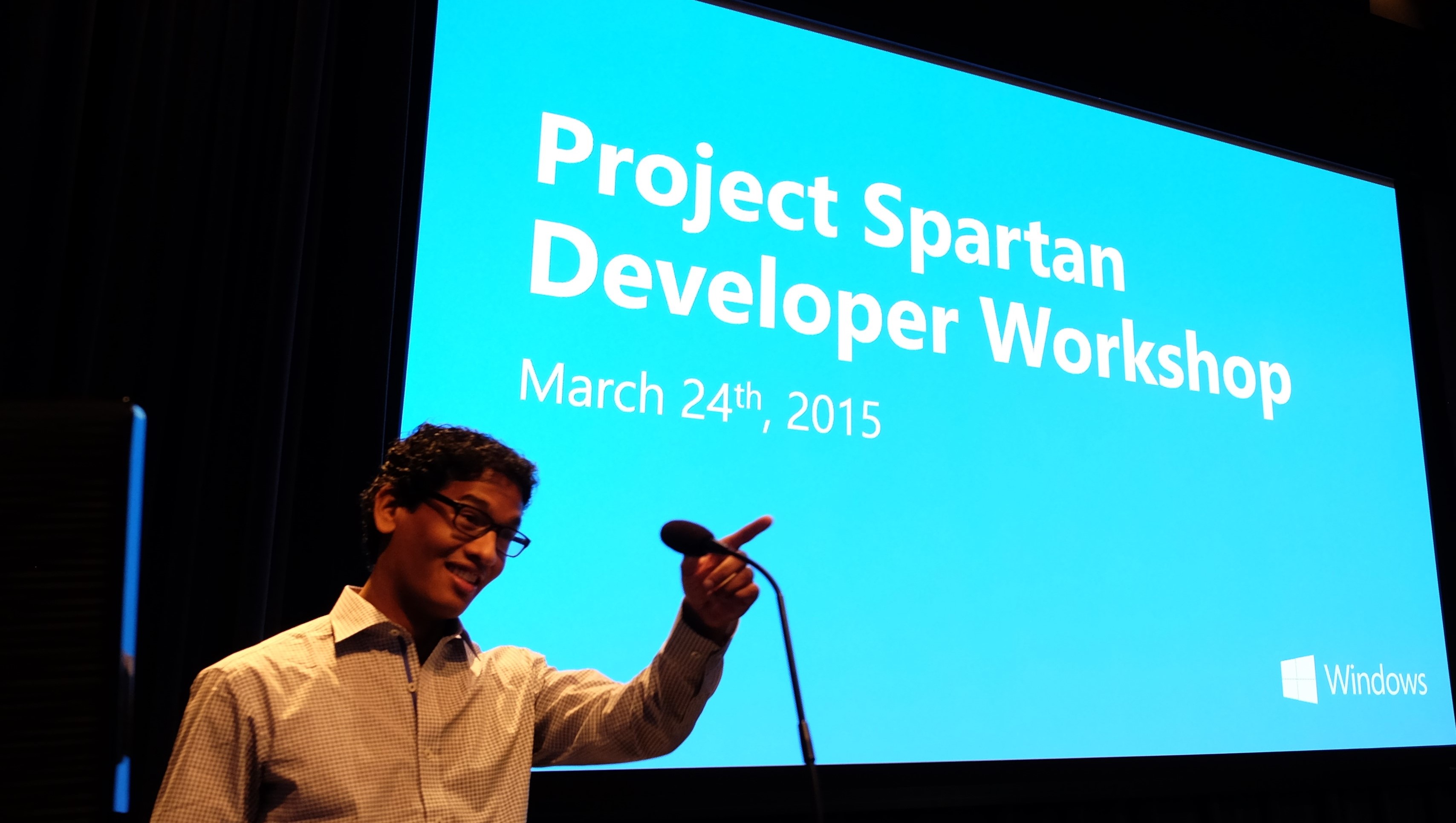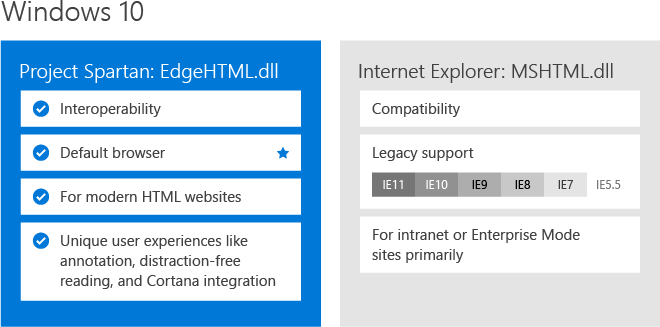Updates from the “Project Spartan” Developer Workshop
Today we’re excited to host some of our top web site partners, enterprise developers and web framework authors at the Microsoft Silicon Valley campus for a "Project Spartan" developer workshop to get an early look at Windows 10’s new default browsing experience as it rapidly approaches a public preview. This is another step in our renewed focus on reaching out and listening to the developer community we depend on, in keeping with the focus on openness and feedback-driven development that is driving initiatives like status.modern.ie and our Windows Insider Program.

If you’re interested in attending a similar event to learn more about “Project Spartan,” there are some great opportunities coming up. We’ll have lots to say about Project Spartan at Build 2015 (April 29th – May 1st in San Francisco) and Microsoft Ignite (May 4th – 8th in Chicago). We’re also excited to announce an all-new Windows 10 Web Platform Summit hosted by the Project Spartan team, which will be open to the public on May 5-6, 2015 at the Microsoft Silicon Valley Campus. Stay tuned to the blog and @IEDevChat for more information on how to register!
A simpler browser strategy in Windows 10
One of the items we’re discussing in today’s workshop is how we are incorporating feedback from the community into the work we are doing on Project Spartan, including some updates we are making related to the rendering engines. When we announced Project Spartan in January, we laid out a plan to use our new rendering engine to power both Project Spartan and Internet Explorer on Windows 10, with the capability for both browsers to switch back to our legacy engine when they encounter legacy technologies or certain enterprise sites.
However, based on strong feedback from our Windows Insiders and customers, today we’re announcing that on Windows 10, Project Spartan will host our new engine exclusively. Internet Explorer 11 will remain fundamentally unchanged from Windows 8.1, continuing to host the legacy engine exclusively.

We’re making this change for a number of reasons:
- Project Spartan was built for the next generation of the Web, taking the unique opportunity provided by Windows 10 to build a browser with a modern architecture and service model for Windows as a Service. This clean separation of legacy and new will enable us to deliver on that promise. Our testing with Project Spartan has shown that it is on track to be highly compatible with the modern Web, which means the legacy engine isn’t needed for compatibility.
- For Internet Explorer 11 on Windows 10 to be an effective solution for legacy scenarios and enterprise customers, it needs to behave consistently with Internet Explorer 11 on Windows 7 and Windows 8.1. Hosting our new engine in Internet Explorer 11 has compatibility implications that impact this promise and would have made the browser behave differently on Windows 10.
- Feedback from Insiders and developers indicated that it wasn’t clear what the difference was between Project Spartan and Internet Explorer 11 from a web capabilities perspective, or what a developer would need to do to deliver web sites for one versus the other.
We feel this change simplifies the role of each browser. Project Spartan is our future: it is the default browser for all Windows 10 customers and will provide unique user experiences including the ability to annotate on web pages, a distraction-free reading experience, and integration of Cortana for finding and doing things online faster. Web developers can expect Project Spartan’s new engine to be interoperable with the modern Web and remain “evergreen” with no document modes or compatibility views introduced going forward.
For a small set of sites on the Web that were built to work with legacy technologies, we’ll make it easy for customers to access that site using Internet Explorer 11 on Windows 10. Enterprises with large numbers of sites that rely on these legacy technologies can choose to make Internet Explorer 11 the default browser via group policy. In addition, since Internet Explorer 11 will now remain fundamentally unchanged from Windows 7 and Windows 8.1, it will provide a stable and predictable platform for enterprise customers to upgrade to Windows 10 with confidence.
Call to action for developers
Our request to web developers remains the same – try out and test our new rendering engine in the Windows 10 Technical Preview via the Windows Insider Program or via RemoteIE. It is currently hosted in Internet Explorer and can activated via the “Enable experimental web platform features” setting in about:flags. Starting in the next flight to Insiders, the new rendering engine will be removed from IE and available exclusively within Project Spartan.
We look forward to your feedback – you can reach us on Twitter at @IEDevChat, the Internet Explorer Platform Suggestion Box on UserVoice, and in the comments below. Remember to mark your calendars for our next Project Spartan developer event on May 5th – 6th in Silicon Valley. We look forward to sharing more details soon!
– Kyle Pflug, Program Manager, Project Spartan